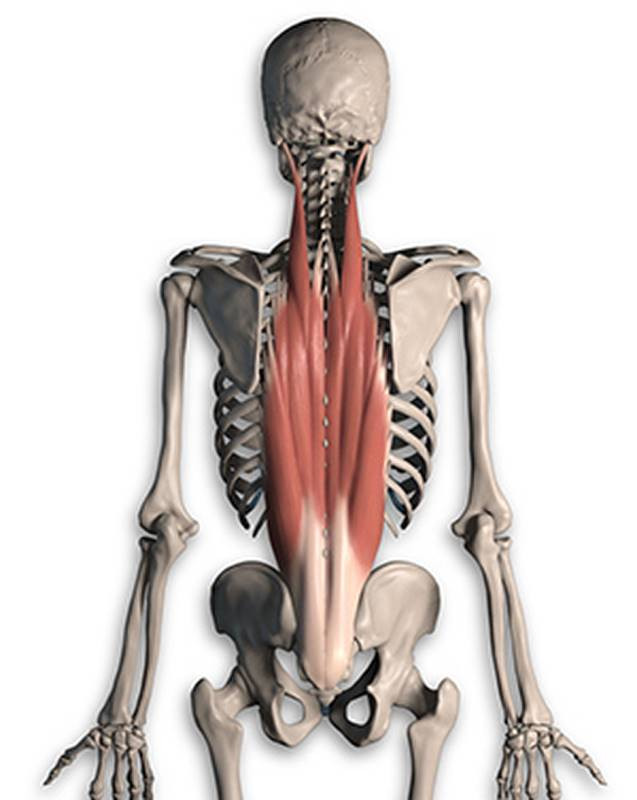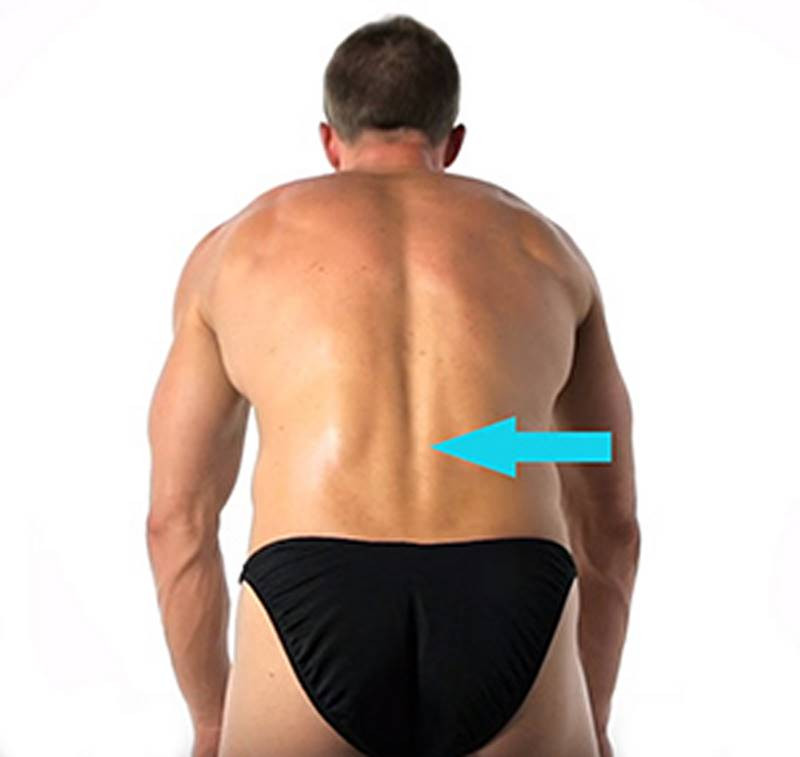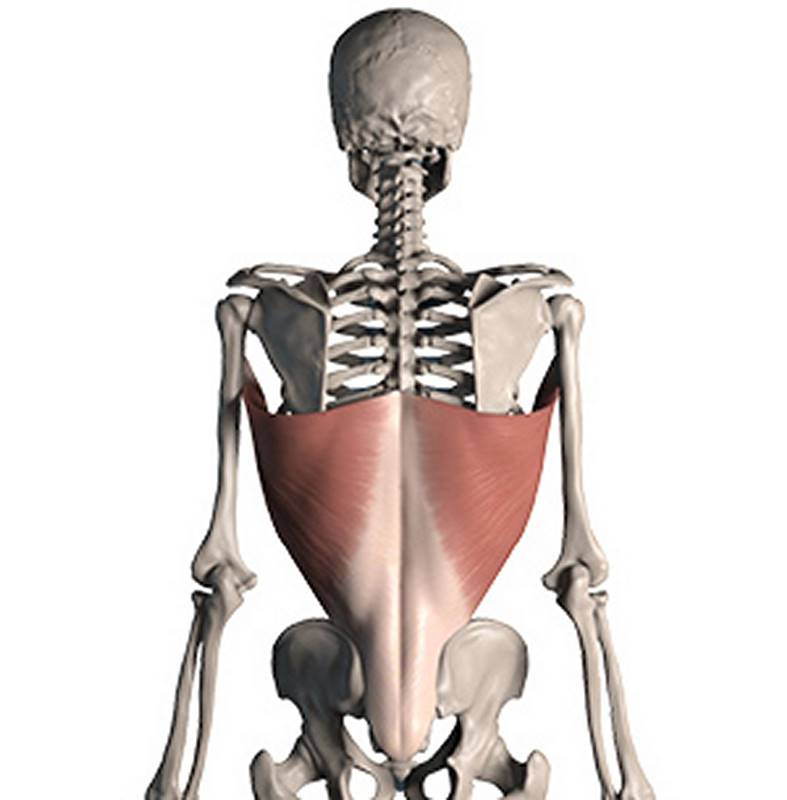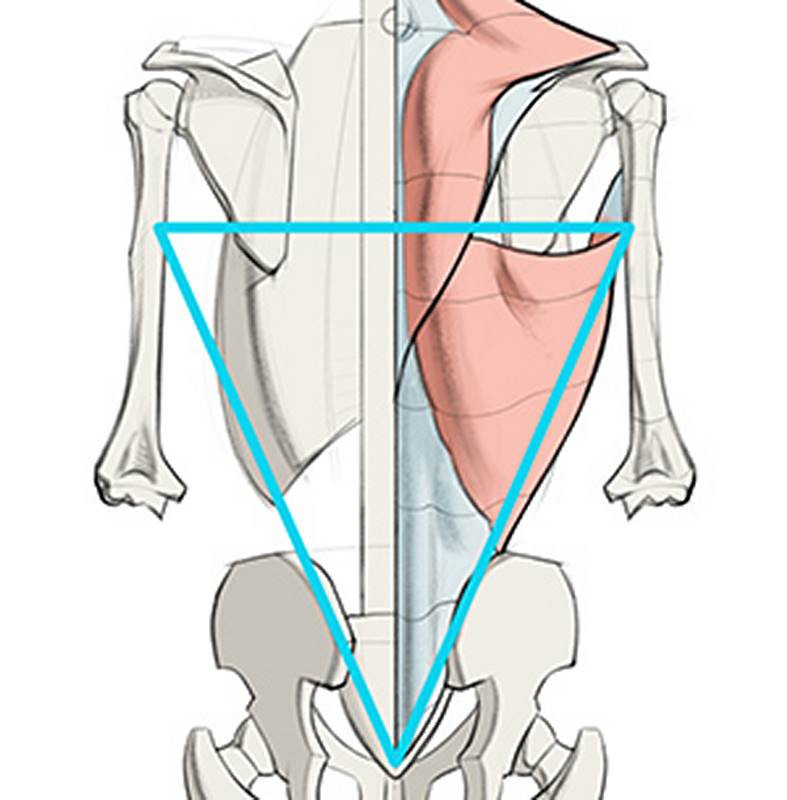In this lesson we’ll learn about two very important muscles of the lower back – the erector spinae and latissimus dorsi.
Erector Spinae
We’ll start with the erector spinae, since it’s the deeper of the two. It’s a cylindrical muscle that travels along the length of the spine.
It originates from the pelvis; more specifically, from the crest of the sacrum and the posterior third of the iliac crest. As it travels up the spine, more fibers originate off the lumbar vertebrae and two lowest thoracic vertebrae to join the group. The erector spinae inserts on all 12 ribs as it passes by, until its final insertion on the mastoid process of the skull. Essentially, the erector spinae is a spine-long arrow and its arrowhead is tucked right into your buttcrack.
The form of the erector spinae is actually split into medial and lateral masses. But, we’ll do a thorough study of the forms in the next lesson.

The function of the erector spinae is to erect the spine, straightening the thoracic and lumbar sections. It also plays a part in rotating and laterally flexing the spine. If you wanna feel your own erector spinae in action, lie on your stomach and pretend to be a boat. The tension you feel near your spine is the erector spinae.
So using that information, can you guess what the erector spinae’s antagonist is?
That’s right, the rectus abdominis. The erector spinae extends the spine, while the rectus abdominis flexes the spine.

Latissimus Dorsi
Let’s move on to the latissimus dorsi. You might recognize “dorsi” from words like “dorsal,” telling you that this is a back muscle. Similar to a dorsal fin on the back of a fish. While the latissimus dorsi isn’t very thick, it’s very wide and reaches from one edge of your back to the other.
Like the erector spinae, the latissimus dorsi originates from the sacrum, the posterior third of the iliac crest, and the lower vertebrae. However, the latissimus is larger than the erector spinae, so it has origin points all the way up through the lower six thoracic vertebrae as well as these points on the lowest 3 ribs. Now, all of these origins are of the lat’s aponeurosis, or tendon.

The actual muscle fibers start farther away from the spine. On a very lean or muscular type, you’ll see the connection of the muscle to the tendon along this curve. On an average person, the lat is pretty thin in the back, so the transition is smooth.

From all these origin points, the latissimus converges toward the armpits and eventually inserts in the bicipital groove of the humerus. More specifically, it inserts between and a little above the inserts of the pectoralis major and teres major.

It actually twists around before it inserts. This means that it overlaps on top of the teres major posteriorly, and then twists around and overlaps on top of the teres major anteriorly as well. The latissimus essentially acts as a sling for the teres major.
Note the overlap at the upper border. The tail of the trapezius sits on top of the latissimus near the spine.
We can simplify the shape of the latissimus into a triangle, where the bottom tip of that triangle is the sacrum and the upper corners are the armpits. The aponeurosis cuts out a diamond shape from the sacrum up the spine.
Okay, almost done. We still have to learn the lat’s function. Even though it’s anchored on the lower back, the latissimus inserts onto the arm and the arm is what it moves. Its primary action is to lower the arm. But like, in a cool way. It also helps to extend the arm and rotate it medially. Swimmers use this muscle when they pull down and back against the water. Rock climbers use it when they pull themselves up.

Alright, now you know the anatomical details. In the next video we’ll study the forms of the erector spinae and latissimus dorsi, which will help you draw them.





















